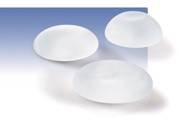Silicone, Saline, or Fat Implants?
This is the final part of the five part series on key choices for successful breast augmentation.
 Most of my patients choose silicone gel implants. They are more natural in appearance and feel with a cohesively, a natural resistance to push and pull, that is most akin to natural breast tissue. Historically, there has been concern with regard to the safety of these implants, however, since their approval in 2006 by the Food and Drug Administration their use gone without a tarnished record. Both Allergan and Mentor publish their post-FDA approval information in excess of seven years at this point and the FDA’s position can be read on their site here.
Most of my patients choose silicone gel implants. They are more natural in appearance and feel with a cohesively, a natural resistance to push and pull, that is most akin to natural breast tissue. Historically, there has been concern with regard to the safety of these implants, however, since their approval in 2006 by the Food and Drug Administration their use gone without a tarnished record. Both Allergan and Mentor publish their post-FDA approval information in excess of seven years at this point and the FDA’s position can be read on their site here.
Saline implants are often chosen by my younger patients (age under 22 as this is the FDA clearance age requirement for consent for silicone) or those that desire a less expensive alternative to silicone. Saline implants are significantly less expensive than silicone. Now that silicone implants may be placed by very small incisions using the aforementioned Keller funnel, incision size no longer seems to be an advantage for saline implants.
“Gummy bear implants” or form-stable implants, though elegant sounding, may be an expensive and imperfect choice for most patients. These implants are most useful in patients with little breast tissue to start and tighter skin envelopes or those requiring breast reconstruction and in certain cases of congenital breast deformity e.g. Poland Syndrome.
Fat grafting is an excellent option for patients seeking very conservative augmentation or improvement in breast shape from volume loss. This involves the micro harvest of fat from a diet and exercise-resistant fat collection in the body, and transfer to the breast. Transfers are done in very small volumes to achieve a natural result and avoid cyst formation. Though cysts are not harmful, they can be misleading on breast exam and mammography, or other imaging, which may lead to a work up for possible breast cancer. Again the fat grafting does not cause cancer, though it may create confusion or a “diagnostic dilemma.”
The best outcomes in aesthetic breast surgery, whether breast augmentation, breast reduction, breast lifting (mastopexy) or breast lift with breast implants, occur following careful discussion and consideration of the questions above. Therefore, if you do not mention all of the above questions at your consult, I will raise them for you. I am very proud to have lectured on most of the points above at the American Academy of Cosmetic Surgery Breast Conferences in 2012 and 2013 and I am always glad to show and discuss my presentation slides with patients that consult in my office. Breast enhancement is particularly exciting for my patients, especially when they see themselves sized in the mirror, however, a thorough understanding of the patient’s desires based on these top five questions affords consistently excellent results.
More from our 5 part breast augmentation blog series:
- Read part 1, Top Five Questions for Breast Enhancement
- Read part 2, Do I need a lift?
- Read part 3, What approach (incision) is best for me?
- Read part 4, Over the muscle or under the muscle?